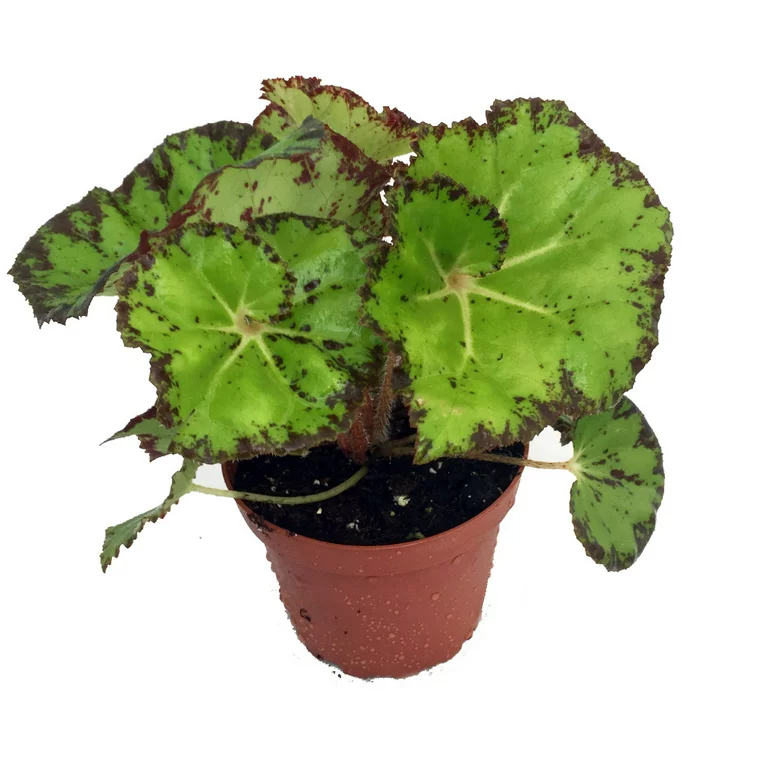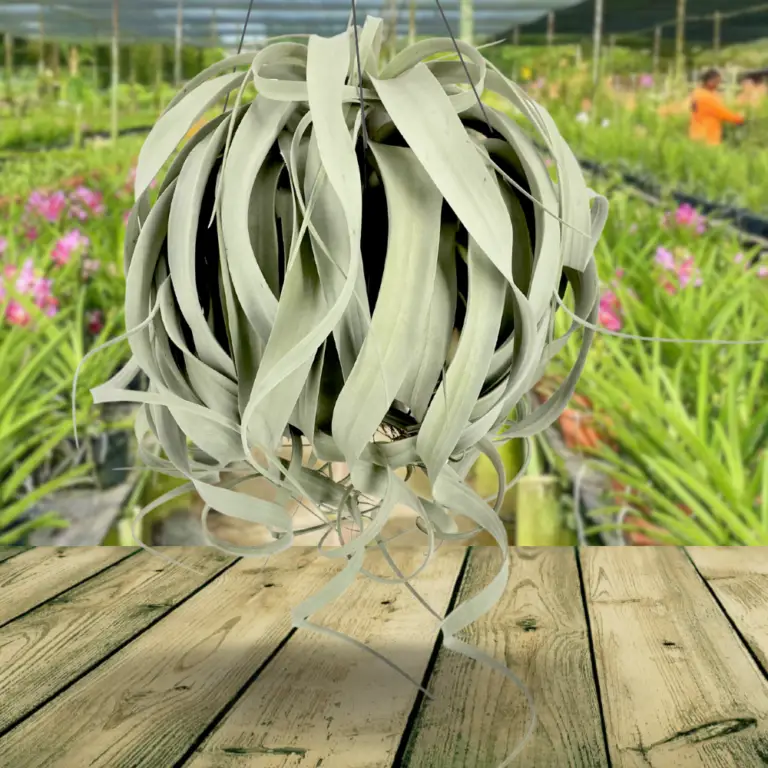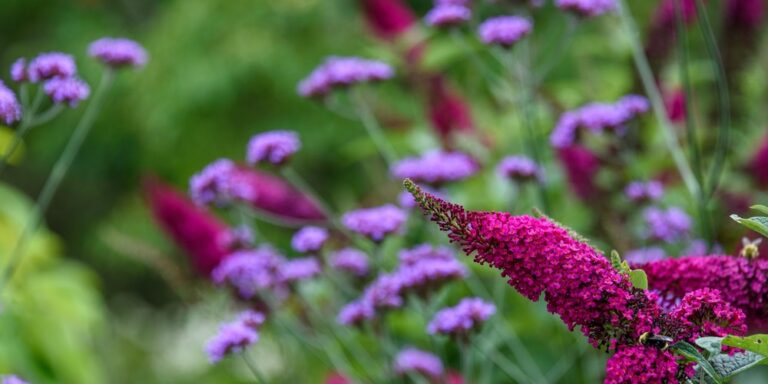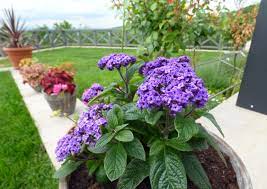1. Orange Hibiscus
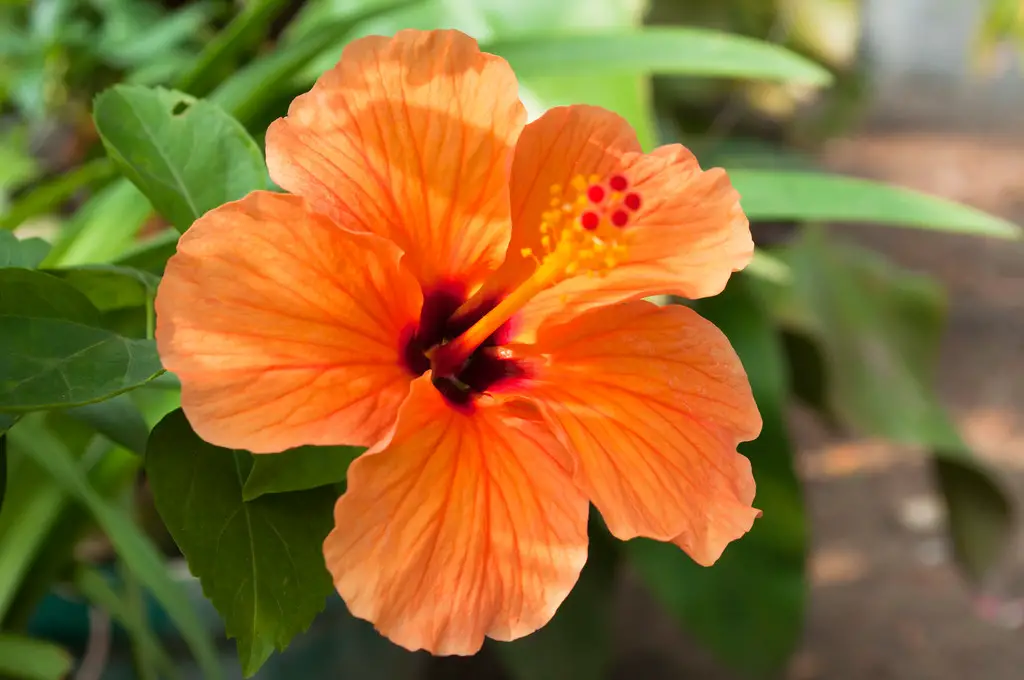
Orange hibiscus is a easy-to-care-for indoor flowering tropical plant that is native to Asia. It is known for its large, showy flowers that can be a variety of orange shades. Orange hibiscus is a popular choice for gardens and patios in warm climates, but it can also be grown indoors in containers.
Care and Growth
Orange hibiscus requires full sun and moist, well-drained soil. It is important to water the plant regularly, especially during hot weather. Orange hibiscus is also susceptible to pests and diseases, so it is important to inspect the plant regularly and take steps to control any problems.
Here is a table of care and growth information for orange hibiscus:
| Requirement | Details |
|---|---|
| Light | Full sun |
| Soil | Moist, well-drained |
| Water | Regular watering, especially during hot weather |
| Fertilization | Feed monthly with a balanced fertilizer |
| Pests and diseases | Inspect regularly and control any problems |
| Hardiness zone | 9-11 |
Benefits
Orange hibiscus is a beautiful and versatile plant that has many benefits. It can:
- Add color and interest to any garden or patio
- Attract butterflies and hummingbirds
- Help to purify the air
- Reduce stress and anxiety
- Improve mood
- Boost the immune system
If you are looking for a beautiful and easy-to-care-for plant, orange hibiscus is a great choice. With its vibrant orange flowers and many benefits, it is sure to add a touch of tropical paradise to your home.
Here are some additional tips for growing orange hibiscus:
- Choose a location that receives full sun for at least 6 hours per day.
- Plant the hibiscus in well-drained soil that is rich in organic matter.
- Water the hibiscus deeply and regularly, especially during hot weather.
- Fertilize the hibiscus every month during the growing season with a balanced fertilizer.
- Protect the hibiscus from frost in cold winter climates.
With proper care, orange hibiscus will thrive and bloom for many years to come.
20 Fragrant Flowers Plant: Symbolism & History
2. Guzmania Conifera
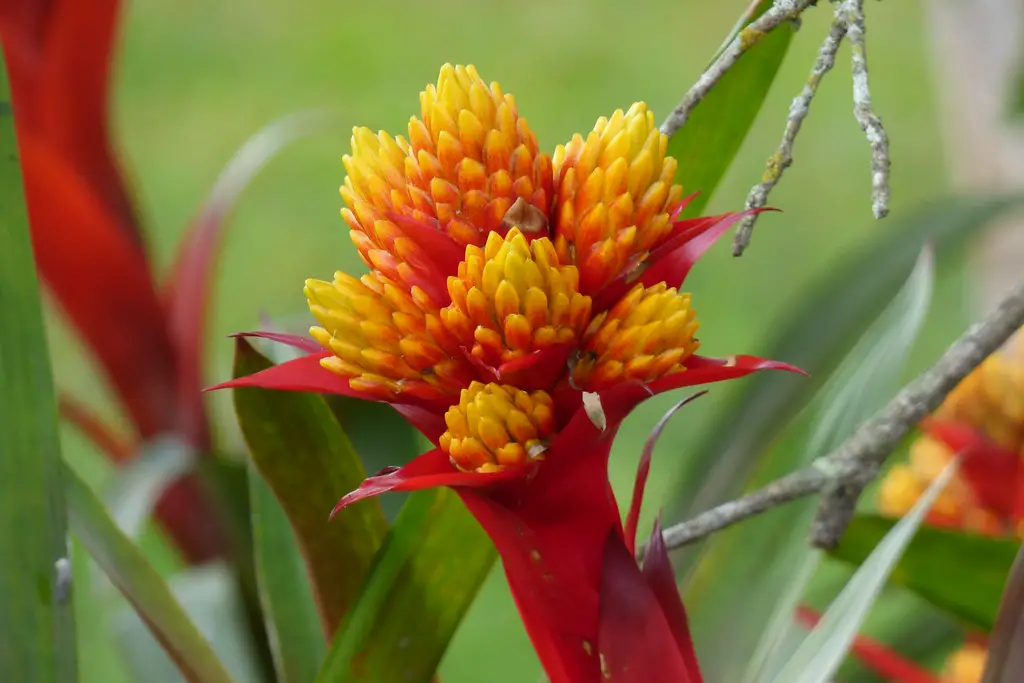
Guzmania conifera is a beautiful bromeliad plant that is native to Ecuador and Peru. It is known for its bright orange-red flowers that bloom in a cone-shaped cluster. Guzmania conifera is a popular choice for indoor plants, as it is relatively easy to care for and can thrive in a variety of conditions.
Care and Growth of Guzmania Conifera
Guzmania conifera prefers bright, indirect sunlight. It can tolerate some direct sunlight, but too much sun can scorch the leaves. The plant should be watered regularly, but the soil should not be allowed to become soggy. Guzmania conifera does not require a lot of fertilizer, but it can be fertilized once a month with a balanced fertilizer during the spring and summer months.
Here is a table of care and growth information for Guzmania conifera:
| Requirement | Details |
|---|---|
| Light | Bright, indirect sunlight |
| Soil | Well-draining potting mix |
| Water | Water regularly, but do not overwater |
| Fertilization | Feed once a month with a balanced fertilizer during the spring and summer months |
| Temperature | 65-85 degrees Fahrenheit |
| Humidity | High humidity is preferred |
| Pests and diseases | Inspect regularly for pests and diseases |
Benefits
Guzmania conifera is a beautiful and versatile plant that has many benefits. It can:
- Add color and interest to any room
- Attract butterflies and hummingbirds
- Help to purify the air
- Reduce stress and anxiety
- Improve mood
- Boost the immune system
If you are looking for a beautiful and easy-to-care-for plant, Guzmania conifera is a great choice. With its vibrant orange-red flowers and many benefits, it is sure to add a touch of tropical paradise to your home.
Here are some additional tips for growing Guzmania conifera:
- Place the plant in a location where it will receive bright, indirect sunlight.
- Water the plant regularly, but do not overwater. The soil should be kept moist, but not soggy.
- Fertilize the plant once a month with a balanced fertilizer during the spring and summer months.
- Keep the plant in a warm, humid environment.
- Inspect the plant regularly for pests and diseases.
With proper care, Guzmania conifera will thrive and bloom for many years to come.
Here are some additional facts about Guzmania conifera:
- The plant is named after its cone-shaped flower cluster, which resembles a conifer tree.
- Guzmania conifera is a member of the Bromeliaceae family, which includes over 3,000 species of plants.
- The plant is native to the cloud forests of Ecuador and Peru.
- Guzmania conifera is a popular houseplant, but it can also be grown outdoors in warm, humid climates.
- The plant blooms for about 6 weeks.
- After the plant blooms, it will die, but new plantlets will grow from the base of the mother plant.
3. Guzmania Purple
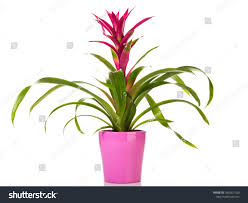
Introduction
Guzmania purple is a beautiful and easy-to-care-for indoor flowering and bromeliad plant that is native to South America. It is known for its vibrant purple leaves and bracts, which can last for several months. Guzmania purple is a popular choice for indoor plants, as it is relatively easy to care for and can thrive in a variety of conditions.
Care and Growth of Guzmania Purple
Guzmania purple prefers bright, indirect sunlight. It can tolerate some direct sunlight, but too much sun can scorch the leaves. The plant should be watered regularly, but the soil should not be allowed to become soggy. Guzmania purple does not require a lot of fertilizer, but it can be fertilized once a month with a balanced fertilizer during the spring and summer months.
Here is a table of care and growth information for Guzmania purple:
| Requirement | Details |
|---|---|
| Light | Bright, indirect sunlight |
| Soil | Well-draining potting mix |
| Water | Water regularly, but do not overwater |
| Fertilization | Feed once a month with a balanced fertilizer during the spring and summer months |
| Temperature | 65-85 degrees Fahrenheit |
| Humidity | High humidity is preferred |
| Pests and diseases | Inspect regularly for pests and diseases |
Benefits
Guzmania purple is a beautiful and versatile plant that has many benefits. It can:
- Add color and interest to any room
- Attract butterflies and hummingbirds
- Help to purify the air
- Reduce stress and anxiety
- Improve mood
- Boost the immune system
If you are looking for a beautiful and easy-to-care-for plant, Guzmania purple is a great choice. With its vibrant purple leaves and bracts and many benefits, it is sure to add a touch of tropical paradise to your home.
Here are some additional tips for growing Guzmania purple:
- Place the plant in a location where it will receive bright, indirect sunlight.
- Water the plant regularly, but do not overwater. The soil should be kept moist, but not soggy.
- Fertilize the plant once a month with a balanced fertilizer during the spring and summer months.
- Keep the plant in a warm, humid environment.
- Inspect the plant regularly for pests and diseases.
With proper care, Guzmania purple will thrive and bloom for many years to come.
Here are some additional facts about Guzmania purple:
- The plant is named for its purple leaves and bracts.
- Guzmania purple is a member of the Bromeliaceae family, which includes over 3,000 species of plants.
- The plant is native to the cloud forests of South America.
- Guzmania purple is a popular houseplant, but it can also be grown outdoors in warm, humid climates.
- The plant blooms for about 6 weeks.
- After the plant blooms, it will die, but new plantlets will grow from the base of the mother plant.
4. Belgian Hybrid Orange Clivia
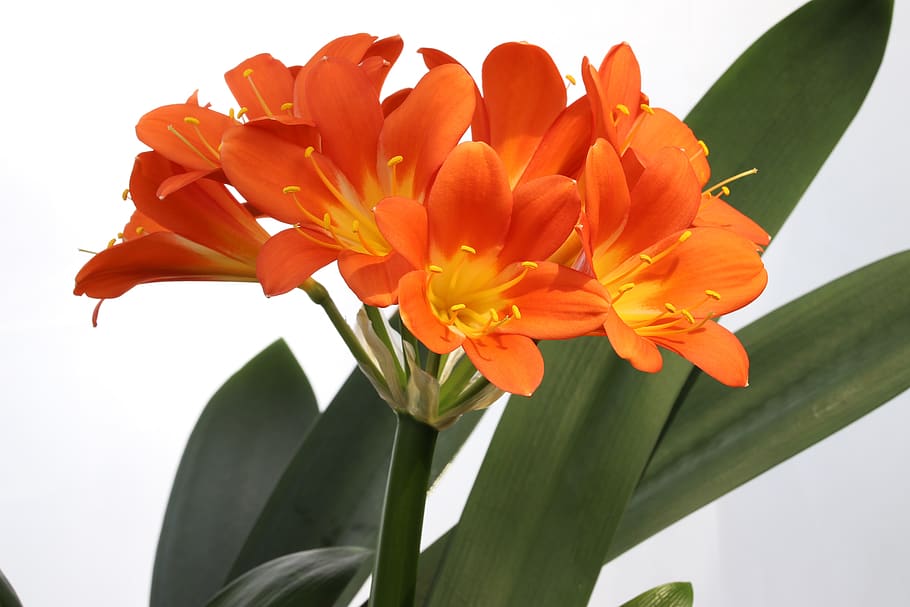
Introduction
Belgian Hybrid Orange Clivia is a beautiful evergreen perennial plant that is native to South Africa. It is known for its showy clusters of orange trumpet-shaped flowers that bloom in late winter to early spring. The plant is also known for its broad, dark green leaves that are wider and shorter than other clivia varieties.
Care and Growth
Belgian Hybrid Orange Clivia is a relatively easy-care indoor flowering plant that can be grown outdoors in warm climates. The plant prefers partial shade to full shade and moist, well-draining soil. It is important to water the plant regularly, but do not overwater. The plant should be fertilized once a month with a balanced fertilizer during the spring and summer months.
Here is a table of care and growth information for Belgian Hybrid Orange Clivia:
| Requirement | Details |
|---|---|
| Light | Partial shade to full shade |
| Soil | Moist, well-draining |
| Water | Regular watering, but do not overwater |
| Fertilization | Feed once a month with a balanced fertilizer during the spring and summer months |
| Temperature | 60-80 degrees Fahrenheit |
| Humidity | 50-70% |
| Pests and diseases | Inspect regularly for pests and diseases |
drive_spreadsheetExport to Sheets
Benefits
Belgian Hybrid Orange Clivia is a beautiful and versatile plant that has many benefits. It can:
- Add color and interest to any room or garden
- Attract butterflies and hummingbirds
- Help to purify the air
- Reduce stress and anxiety
- Improve mood
- Boost the immune system
If you are looking for a beautiful and easy-to-care-for plant, Belgian Hybrid Orange Clivia is a great choice. With its vibrant orange flowers and many benefits, it is sure to add a touch of tropical paradise to your home.
Here are some additional tips for growing Belgian Hybrid Orange Clivia:
- Plant the clivia in a container or in the ground in a location that receives partial shade to full shade.
- Water the clivia regularly, but do not overwater. The soil should be kept moist, but not soggy.
- Fertilize the clivia once a month with a balanced fertilizer during the spring and summer months.
- Protect the clivia from frost in cold winter climates.
- Repot the clivia every 3-4 years, or when it outgrows its pot.
With proper care, Belgian Hybrid Orange Clivia will thrive and bloom for many years to come.
5. White Cymbidium Orchid
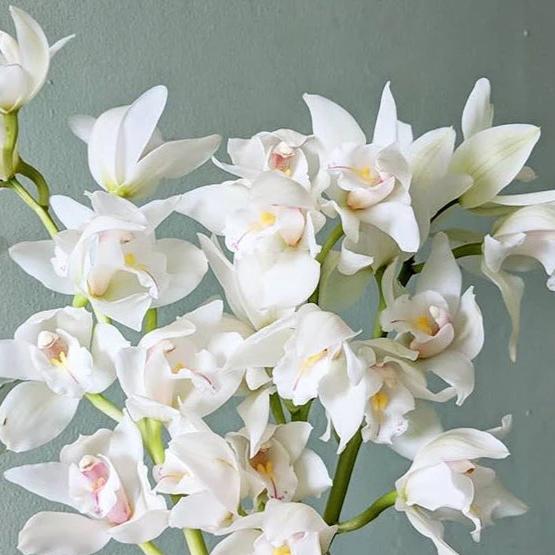
Introduction
White Cymbidium orchid is a beautiful and popular orchid that is native to Asia. It is known for its long-lasting, white flowers that bloom in the winter and spring. The plant is also known for its large, leathery leaves that are dark green in color.
Care and Growth
White Cymbidium orchid is a relatively easy-care indoor flowering plant that can be grown outdoors in warm climates. The plant prefers bright, indirect sunlight and moist, well-draining soil. It is important to water the plant regularly, but do not overwater. The plant should be fertilized once a month with a balanced fertilizer during the spring and summer months.
Here is a table of care and growth information for White Cymbidium orchid:
| Requirement | Details |
|---|---|
| Light | Bright, indirect sunlight |
| Soil | Moist, well-draining |
| Water | Regular watering, but do not overwater |
| Fertilization | Feed once a month with a balanced fertilizer during the spring and summer months |
| Temperature | 60-75 degrees Fahrenheit |
| Humidity | 50-70% |
| Pests and diseases | Inspect regularly for pests and diseases |
Benefits
White Cymbidium orchid is a beautiful and versatile plant that has many benefits. It can:
- Add color and interest to any room or garden
- Attract butterflies and hummingbirds
- Help to purify the air
- Reduce stress and anxiety
- Improve mood
- Boost the immune system
If you are looking for a beautiful and easy-to-care-for orchid, White Cymbidium orchid is a great choice. With its long-lasting, white flowers and many benefits, it is sure to add a touch of elegance to your home.
Here are some additional tips for growing White Cymbidium orchid:
- Plant the orchid in a container or in the ground in a location that receives bright, indirect sunlight.
- Water the orchid regularly, but do not overwater. The soil should be kept moist, but not soggy.
- Fertilize the orchid once a month with a balanced fertilizer during the spring and summer months.
- Mist the orchid regularly to increase humidity.
- Repot the orchid every 2-3 years, or when it outgrows its pot.
With proper care, White Cymbidium orchid will thrive and bloom for many years to come.

